
For all of humankind’s history, we’ve been fascinated with hidden places. Before they were a
fun architectural addition to new homes, hidden rooms and secret passages served a purpose. Most often, that purpose was to allow someone to hide or escape from some kind of danger. At other times, though, they have served a much more sinister purpose. Here are ten notable hidden chambers, secret rooms, and concealed passages from throughout history from priest holes to royal escape routes.
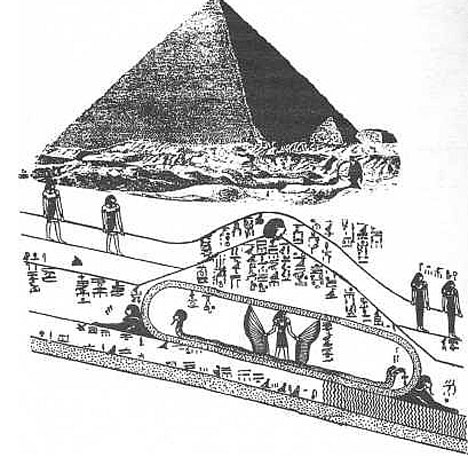
There are few cultures more mysterious than the Ancient Egyptians. Their enormous monuments defy our ideas about ancient technology. Countless explorers, marauders and archaeologists have struggled to uncover the secrets of the Giza Plateau pyramids for centuries. The designers of the monuments must have anticipated this, because their ingenious designs allowed many mummified remains to lie undisturbed since they were initially laid to rest. The pyramids often contain a decoy room filled with a few items to throw off tomb raiders, while the actual burial chamber is concealed. Only with the progression of our own technology have we been
able to detect the rooms hidden deep beneath the main passages.

During the reign of Queen Elizabeth I, practicing Catholic rites was punishable by up to life in prison or even death. Some brave Catholic priests roamed the country to visit loyal Catholics and perform services in their homes. The Queen’s men also roamed the country to catch Catholic priests in the act. As a result, many homes featured hidden chambers called
priest holes. Priest holes were tiny, cleverly concealed spaces designed to hide a Catholic priest during raids and searches. Searches could last for days or even weeks, and often involved experienced builders who were trained to look for hiding places. Some priests were known to starve or suffocate in the cramped quarters while waiting out a search.

Even before the time of Catholic persecution, it was not unusual for British homes to feature hidden rooms and passages designed to conceal people or provide a quick escape in case of danger. Existing priest holes and other hidden rooms in castles and homes came in handy when
King Charles II was fleeing during the English Civil War. He took refuge in several homes with hidden chambers, often spending several days at a time holed up in tiny spaces. You can still find priest holes and hidden chambers today in many of England’s historic homes.

Among the more gruesome hidden rooms and secret passages were those used by
H.H. Holmes, often called America’s first serial killer. In the late 1800s, Holmes (born Herman Webster Mudgett) constructed an enormous building in Chicago. Part of the money for this project came from his dishonest dealings in insurance fraud and the occasional murder. The top floor of the three-story building contained numerous architectural oddities, like hidden staircases, doors that could only be opened from the outside, and trap doors allowing Holmes to enter rooms while guests were sleeping. No builder worked on the construction for very long because Holmes wanted to be the only person to know its secrets. It is believed that Holmes murdered hundreds of victims in this “Murder Castle,” as it became known. The victims’ bodies dropped to the hidden dissection room/crematorium in the basement via a secret chute. The Murder Castle burned to the ground in 1895 and a post office now stands on the site.
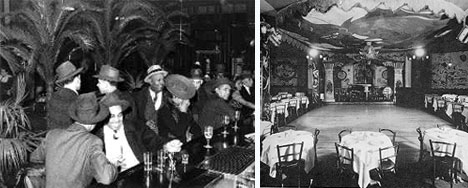
During America’s Prohibition period of the early 20th century, the alcohol trade (and the associated gambling and prostitution trades) went underground. Speakeasies sprang up around the country. Though they often didn’t serve alcohol – patrons brought their own – they provided a place to get together and share common vices. The ingenuity displayed by some illegal establishments was really amazing. Entire bars, casinos and brothels were cleverly hidden inside “front” businesses. Their entrances were disguised as blank walls, solid concrete floors, and innocuous closets. Although many were discovered and their owners imprisoned, several speakeasies survived, either by cunning or bribery.
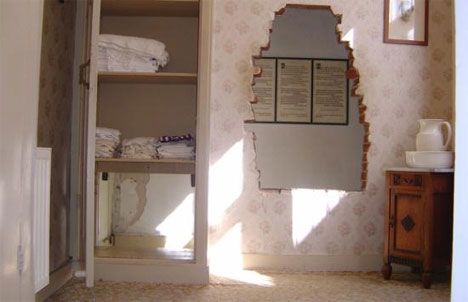
The hidden rooms of the Holocaust era – and the brave resisters who owned them – were responsible for saving countless lives. One of the most famous and admired families from this time was the
ten Boom family of Haarlem, the Netherlands. The family owned a watch shop and lived in quarters above it. When
Corrie ten Boom, the youngest of the family’s four children, became involved in the Dutch underground in 1940, an architect built a secret chamber in her bedroom. An untold number of Jewish fugitives were hidden there until the home was raided in 1944. The home is a museum today.

Desperation coupled with ingenuity made it possible for a large group of POWs to construct an elaborate escape plan. Imprisoned in Colditz Castle in Germany during WWII, British and French soldiers hatched several elaborate escape plans. To conceal their projects, they used wooden shutters and mud to create a false ceiling in the castle’s attic. The hidden room was disguised so well that it was possible to enter the attic and have no idea that it contained a secret. A
glider was painstakingly assembled in the concealed space, and a
secret radio listening station also operated from there. In the end, the glider never saw its launch. The war ended before the two men could make their escape.
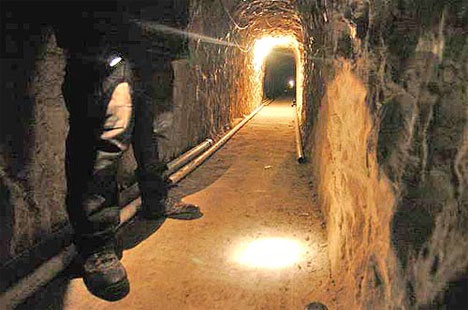
In 2006, a sophisticated
tunnel was discovered running from Tijuana, Mexico to Otay Mesa, California. The tunnel was used primarily for transporting marijuana into the US. Although it wasn’t the first (or the last) tunnel of its kind to be discovered, this secret passage was amazingly elaborate and had obviously taken a long time and a lot of creativity to construct without raising suspicions.
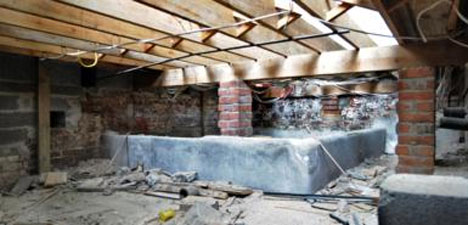
In early 2008, a horrifying story hit the media from Jersey, an island off the coast of Normandy. A former children’s home was found to contain several secret below-ground chambers that had been used to discreetly torture resident children from the 1960s to the late 80s. Excavation of the partially buried chambers uncovered evidence of torture implements and juvenile human remains.
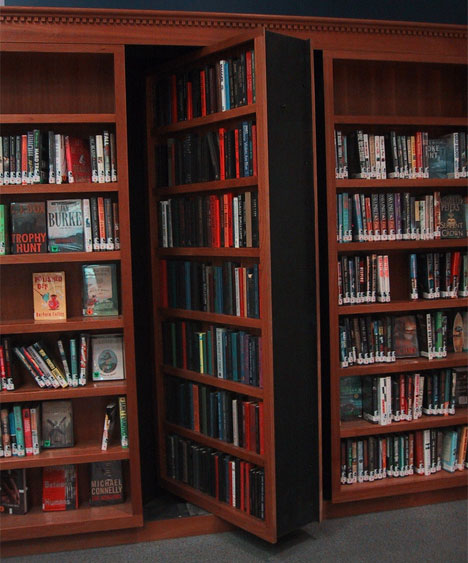
Not all stories of hidden rooms and secret passages involve death and danger. Some are just plain odd. In 2002, an engineering student name Stanislas Gosse was arrested for stealing priceless books from the 8th-century Mont Sainte-Odile convent library. His crimes were facilitated by the use of a centuries-old secret passage which was previously known only to a handful of people. Gosse would enter the convent during the day with tourists, slip into an unused corridor, and enter the library through a door concealed behind a shelf of books. He was only caught when police discovered the secret passage by chance and installed a security camera in the library.














